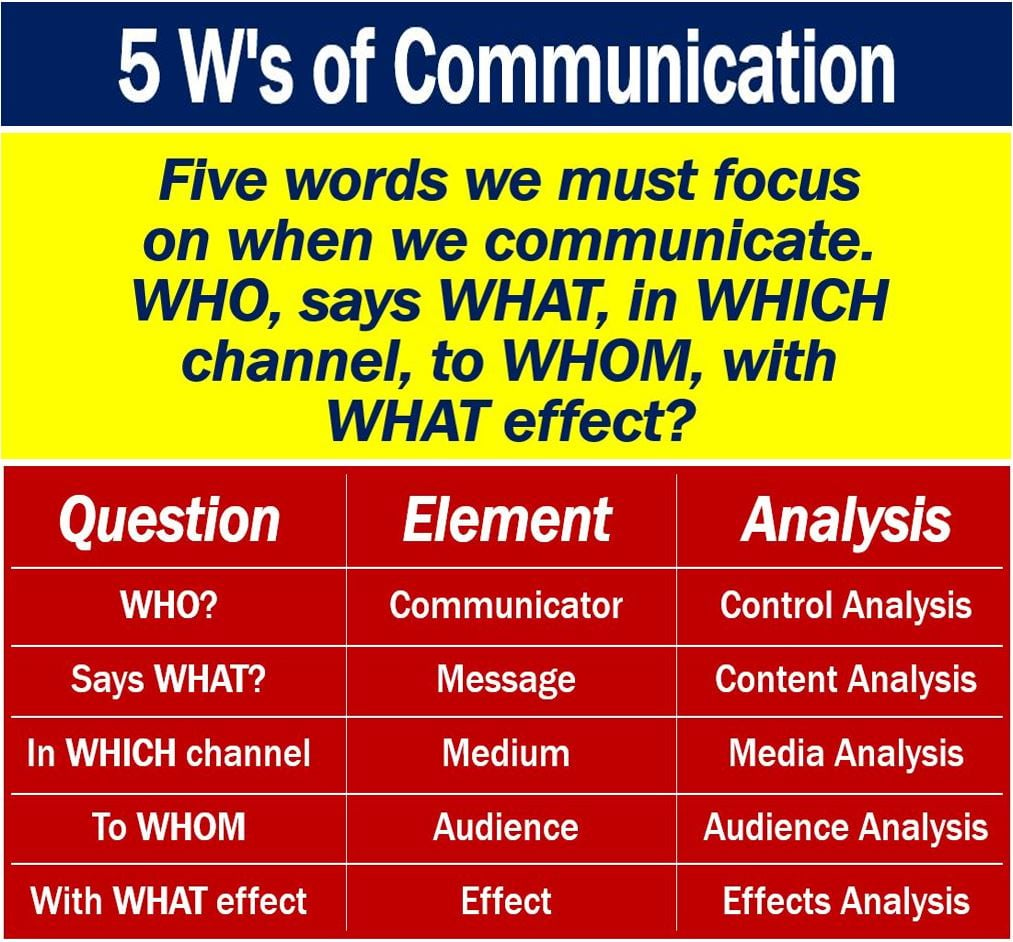The Five W’s of Communication are five words that begin with the letter W. We focus on them when we want our communication to be effective, i.e., reach their target and influence the recipient. The five words are WHO, says WHAT, in WHICH channel, to WHOM, with WHAT effect?
Harold Lasswell (1902-1978), an American political scientist and communication theorist, developed the Five W’s of Communication. He developed the model in 1948 while he worked at Yale Law School as a professor.
We also call it Laswell’s Model of Communication.
Not all organizations have the same list of five words beginning with W. Some adapt them either to their particular industry or how they interpret what Lasswell said.
The adaptability of the Five W’s model lends itself well to the digital age, where communication channels are constantly evolving and require dynamic strategies to engage audiences effectively.
The Five W’s framework has been influential in developing customer relationship management strategies, ensuring that interactions are tailored to meet the specific needs and preferences of each client.

Five W’s – a model
The Five W’s of Communication is a verbal communication model. It organizes the scientific study of the communication process.
The model focuses on each element of communication:
Who
The first ‘WHO’ is the communicator, i.e., the person who formulates the message.
What
‘WHAT’ is the content of the message.
In Which Channel
‘WHICH’ refers to the channel of communication, i.e., medium of communication. The plural of medium is media. There are two media of communication, physical and mechanical.
Physical media includes channels where the communicator and receiver of the message can physically see each other. Video conferences, face-to-face meetings, and departmental meetings, for example, are physical media.
We sometimes refer to video conferences as ‘e-meetings.’
Mechanical media means written or electronic channels, i.e., personal letters, E-mails, billboards, newsletters, magazines, SMS, or social media.
Whom
‘WHOM’ refers to the audience, i.e., to whom is the message delivered?
This could be one individual or many people scattered over a wide area. It could also mean many people in one area. If you give a presentation in a large auditorium, for example, the audience is in one place.
What (effect)
‘With WHAT effect’ refers to the message’s outcome, i.e., how effective it was. Did the message achieve what the communicator wanted?
In public relations, the ‘effect’ may refer to feedback.
We can use the 5 W’s model for many different settings, and not only business ones. It is a useful model to use in teaching.
Example Sentences
Below, you’ll find six sentences featuring the term ‘5 W’s’ to illustrate its use in various contexts.
- “When crafting a press release, it’s essential to address the ‘5 W’s of Communication’ to ensure that the message is clear and comprehensive.”
- “Teachers often emphasize the ‘5 W’s’ in writing classes to help students learn the fundamentals of reporting and storytelling.”
- “The ‘5 W’s of Communication’ are not only crucial in journalism but also in effective business communication, where clarity and precision are paramount.”
- “Understanding the ‘5 W’s’ can greatly enhance one’s ability to convey information effectively in both written and verbal communication.”
- “In any marketing campaign, addressing the ‘5 W’s of Communication’ helps target the message to the right audience with the desired impact.”
- “The ‘5 W’s’ form the backbone of investigative reporting, as they guide journalists to cover every angle of the story.”
